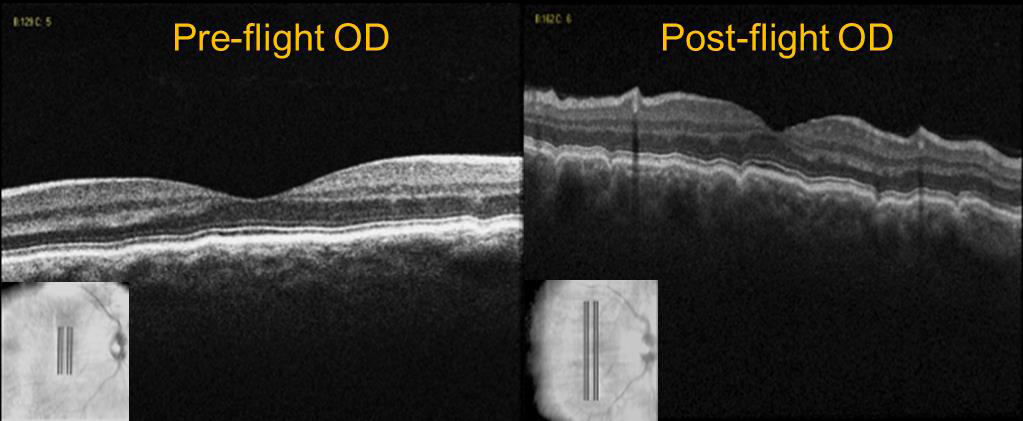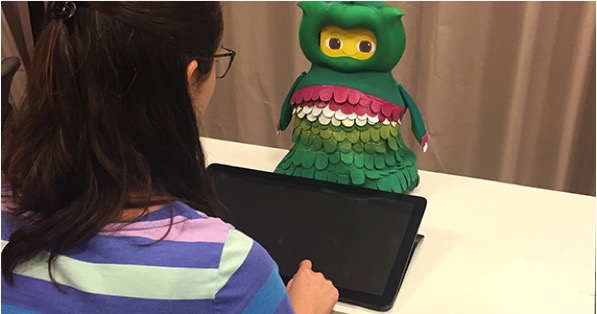| Access sessions, exhibit hall and special events through the Academy event planner. |
The future of eye care could offer radical improvements in the ability to rectify visual loss, so discover what new discoveries have been made at this year’s Monroe J. Hirsch Research Symposium, tomorrow evening, October 8, 9-11pm Eastern Time.
The symposium will focus on the growing impact of robotics and smart technology in optometry. Check out experts who will share information on optometric issues in space, socially assistive robotics for vision rehabilitation and autonomous vehicles.
“I think the Research Committee has put together a unique program that will discuss cutting-edge research in robotics, artificial intelligence and space travel applicable to optometry and our patients,” says Elizabeth Muckley, OD, FAAO, moderator of the symposium.
 |
| Capt. Brunstetter will discuss the visual impact, such as chorioretinal folds, of a six-month mission to the International Space Station. Click image to enlarge. |
Eye-opening Effects
Commander Tyson Brunstetter, MBA, OD, PhD, Captain of the Medical Service Corps in the United States Navy, will present on a new condition that is affecting many astronauts during long-duration missions called spaceflight-associated neuro-ocular syndrome (SANS). According to Capt. Brunstetter, its earliest signs are detected in 69% of crewmembers onboard the International Space Station. The main signs include optic disc edema, chorioretinal folds, hyperopic shifts in refractive error, and posterior globe flattening. “Thankfully, there is no evidence yet of true vision impairment in astronauts during six-month missions, but some SANS signs can become permanent,” Capt. Brunstetter notes.
The severity of SANS is thought to be related to mission duration, could pose a significant risk to expeditionary spaceflight—especially future missions such as a potential three-year mission to Mars. Capt. Brunstter wonders whether permanent visual field defects could develop or vision become distorted.
“Learning about the long-term effects of gravity on the optic nerve and human body will not only help ensure the future success of our astronauts during long missions, but also may lead to new findings to help patients with diseases that cause optic disc edema,” Dr. Muckley notes.
At NASA’s Johnson Space Center, Capt. Brunstetter and his team are working to discover the pathogenesis and pathophysiology of SANS as well as effective countermeasures. “NASA places a high priority on its work benefiting humanity, and our SANS efforts should benefit terrestrial medicine in the not-so-distant future,” he says.
“With this lecture, my hope is that audience will appreciate the complexity and challenge of SANS, especially those clinicians and scientists with an interest in neurology,” Capt. Brunstetter says. “And if any SANS theories are generated by the conversation, I’d love to hear them.”
 |
| Socially assistive robots could help provide low vision patients daily encouragement, motivational support and reinforcement of skills. Click image to enlarge. |
A Robotic Helper for Low Vision
Ava Bittner, OD, PhD, associate professor at the UCLA Stein Eye Institute, will discuss the development of socially assistive robotics for patients in need of vision rehabilitation, currently for low vision patients who are frustrated with their visual loss and have difficulty reading with a new magnifier. In collaboration with Maja Mataric, PhD, co-director of the Robotics Research Lab at the University of Southern California, Dr. Bittner and her team are customizing a socially assistive robot with the goal of creating a companion and coach in the home to help provide low vision patients daily encouragement, motivational support and reinforcement of skills to improve their outlook and use of a magnifier for reading tasks.
“The number of people with low vision is predicted to double by the year 2050, so we need creative, innovative solutions, like socially assistive robots, to help augment the clinical care we provide,” Dr. Bittner says. “I can envision other optometric indications for socially assistive robots, and hope that others will embrace and work to develop this exciting technology.”
A New Form of Navigation
James Weiland, PhD, professor of ophthalmology and visual sciences and biomedical engineering at the University of Michigan will talk about the opportunities for wearable and autonomous systems technology to help achieve independent mobility.
“Attendees will see how technology uses real time data to help those visually impaired safely navigate busy streets,” Dr. Muckley says.
Dr. Weiland is hopeful that visual impaired individuals will soon be able to take advantage of autonomous vehicles. As of right now, research is exploring sophisticated and compact sensors for capturing up-to-date environmental information not available in maps. He will discuss the current work on interfaces and algorithms that will allow people with visual impairment to interact with autonomous systems, such as strides made in wearable technology that could engage sensory modalities other than vision to communicate information and feedback typically obtained through sight.
Dr. Weiland is confident that the ongoing evolution in autonomous systems offers extraordinary opportunities to improve the lives of people with visual impairment.
